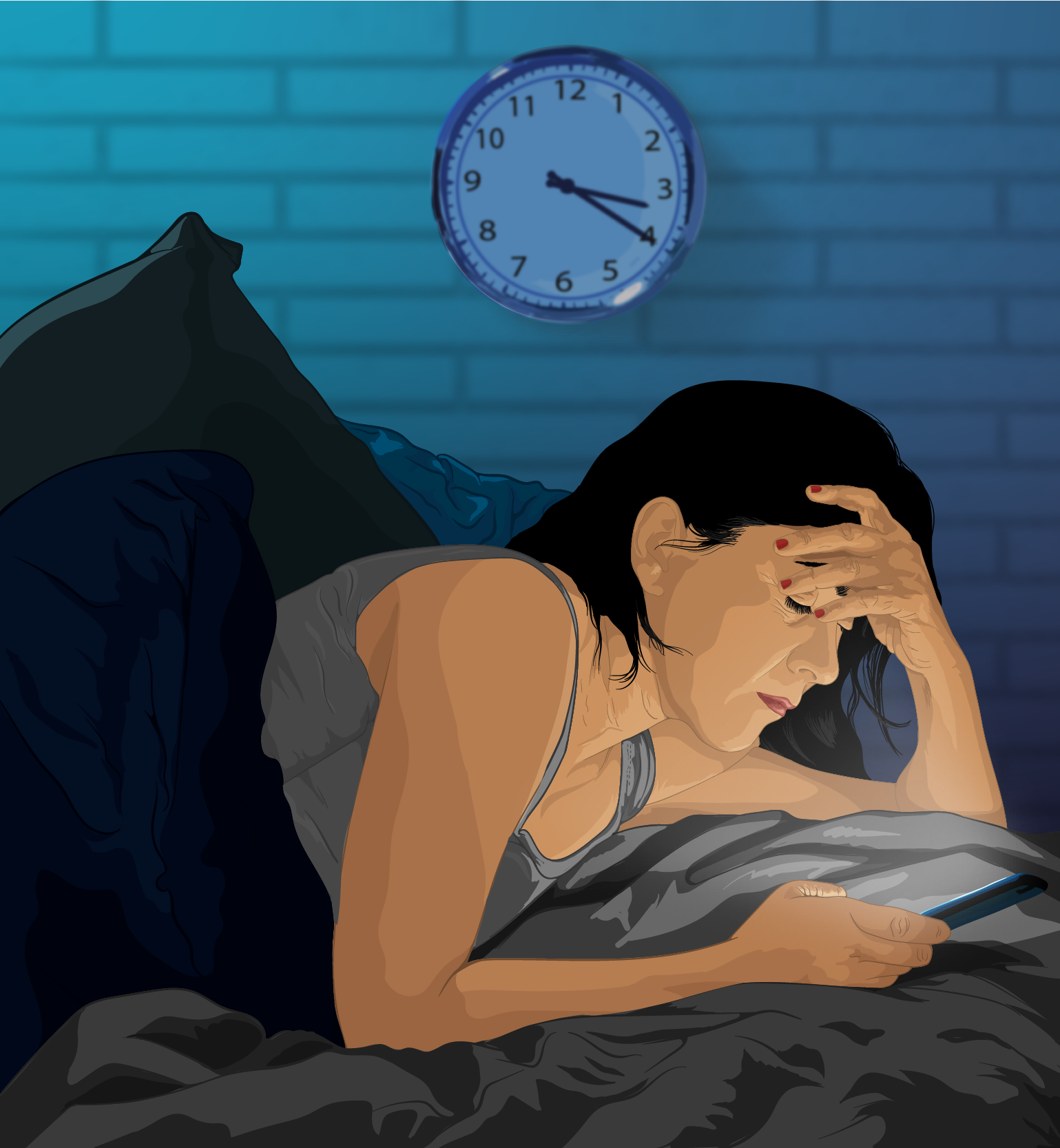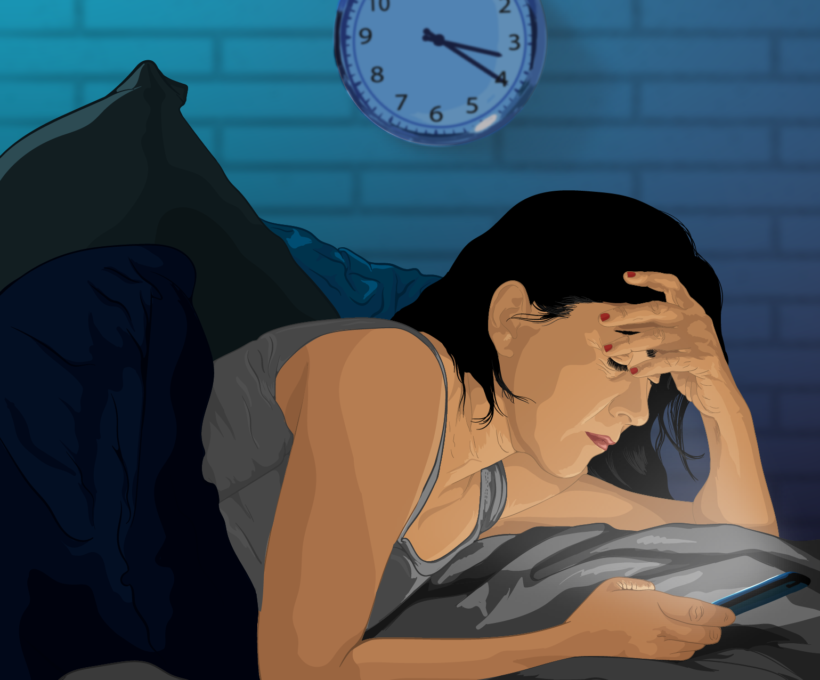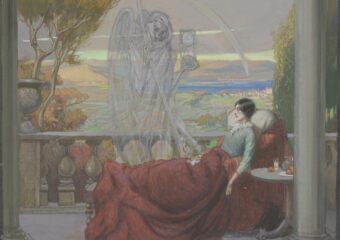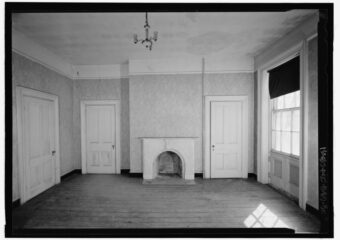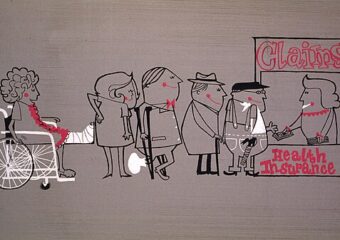Everyone is familiar with sleeping problems (insomnia). How often it occurs, what forms it takes, and how severe and life altering it can be varies immensely from one person to another. The mostly-literary-fiction writer, Samantha Harvey, had a bout of frequent, severe, and disruptive insomnia for a year at the age of forty-three. She writes about this year of insomnia in her book, The Shapeless Unease: A Year of Not Sleeping (reviewed here). Though in this book Harvey covers several topics and forms, it chiefly involves what she went through as a result of her insomnia. Her literary skills bring vivid and penetrating views of the suffering insomnia can inflict, and elaborate on the more technical and truncated classical biomedical text.
Below I compare classic biomedical text on insomnia from Harrison’s Principles of Internal Medicine with excerpts from Harvey’s book that concern how insomnia affected her.
The Biomedical
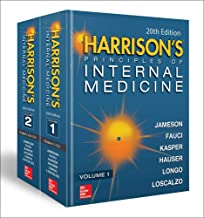
From: Scammell TE, Saper CB, Czeisler CA. Sleep Disorders. In: Jameson J, Fauci AS, Kasper DL, et al., eds. Harrison’s Principles of Internal Medicine, 20e. McGraw Hill; 2018.
Insomnia is the complaint of poor sleep and usually presents as difficulty initiating or maintaining sleep. People with insomnia are dissatisfied with their sleep and feel that it impairs their ability to function well in work, school, and social situations. Affected individuals often experience fatigue, decreased mood, irritability, malaise, and cognitive impairment.
https://accesspharmacy.mhmedical.com/content.aspx?bookid=2129§ionid=192344545.
Many patients with insomnia have negative expectations and conditioned arousal that interfere with sleep. These individuals may worry about their insomnia during the day and have increasing anxiety as bedtime approaches if they anticipate a poor night of sleep. While attempting to sleep, they may frequently check the clock, which only heightens anxiety and frustration.
The Literary
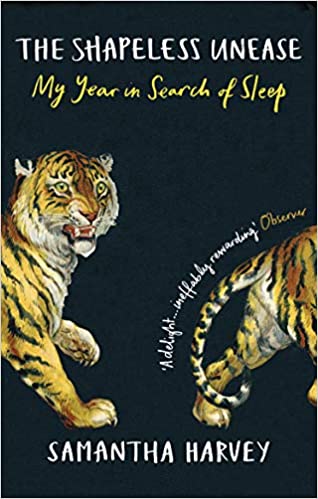
From: Harvey, S. The Shapeless Unease: A Year of Not Sleeping, New York, Grove Press, 2021.
The book is unconventional in its structure, there are no chapters or other formal breaks in the text, for example. Parts of the book are distinguished by the time of night when Harvey describes her insomnia as she might have in a diary or journal. I excerpt some of her descriptions associated with the time of night, and from a description taking the form of a history of present illness.
Excerpts from time of night:
Midnight:
p. 3
Into bed and lie down. Head goes on pillow…Out of bed…Back into bed…The heart starts up its thrup-thrup-thrup, a tripping percussion in a chest that now fills with breath. And with the lights out, here they come, all of them, the holy and the horrifying; here they are.
1 am:
pp. 23-24, 26
Lie here then. Just lie here. What of it? It’s just lying here. Think of good things…Count your blessings. Lying here, thinking of the sunsets and swimming and the planets and stars, what is there to be afraid of? Try to calm the banging heart.
I don’t look at the clock in the night but I’ve spent so many nights awake that I usually know the time within around ten or twenty minutes; I know the texture of the passing hours and the texture of my thoughts as the night abrades them. Around now they begin to show signs of wear.
3 am:
p. 54
The long trail of the freight train snags the night. Something has been torn – it won’t be mended now until night falls again…At three, the first ember has already taken. In reality, for those awake enough to register it, there is about an hour of night at most – somewhere between two and three, a brief lull between one day dwindling and the next awakening.
4 am:
pp. 87-89
Then into the cocoon of that warm moment a thought appears and begins to open: don’t think, it says. Don’t think.
Then the thought: stop thinking. You are always thinking.
Then the thought: that was a thought, the thought to stop thinking.
Then the thought: that was a thought, the thought that it was a thought to stop thinking.
Then the reprimand: stop thinking.
Then the thought: was that a thought, or an order from my higher mind?
The thought: you think you have a higher mind?
Thought: I’m awake.
The just-after-four flight from Bristol airport passes over in a distant smear of sound.
5 am:
pp. 132-133
The collecting tide of the night gathers itself up into a wave. Can’t do it, can’t do it, can’t cope, can’t go on. Too many nights awake, too much darkness and loneliness, can’t do it. Am downstairs without knowing it, pacing, lunatic, shaking, tugging at hair, wheeling about in search of true north. My true north appears in the living room, shocked and sleepy, takes my wrists in his hands, Shhh, it’s all right, it’s OK, everything is OK, it’s all right. Wishing to scream, finding myself screaming. ‘No’ the only word the brain seems to remember.
no to everything,
no.
6 am:
pp. 156-158
The clock on the oven that makes me cry with its painful reporting. 2.26. 3.49. 4.11. 5.48.
Beyond panic, and well beyond sleep, I sit on the sofa and watch as the day comes, grain by grain, like ash falling. Black things turn toneless grey. There emerges in the garden the things I know – the paving and the steps and the grass and the broken bench, the pile of branches from the cut-back hazel, the sculptures I made and never finished, the little cherry tree with its prayer flags.
7:30 am:
p. 170
Here is a pile of yesterday’s clothes on the floor. I pick them up. Or, if bedtime superstition corralled me into folding them roughly and stuffing them in the cupboard, then I take them out again and put them on the bed.
Excerpts from “history of present illness”:
In an early section of the book, Harvey offers descriptions of her insomnia that take a form similar to the clinical “history of present illness,” often found in official medical records, and necessarily in the third person. I excerpt elements of this section offering specific clinical manifestations and relevant history that convey what she went through in her terms, and as can be compared to biomedical descriptions.
Her abiding feelings over these weeks and months were of anger, loneliness, despair and fear.
pp. 12-15
She also reports suspicions of having Fatal Familial Insomnia, and extremely rare hereditary disease resulting in premature death.
The panic…[was] resulting in fierce attacks at night, during which she would hyperventilate, convulse and hit her head, either with her own fists or against a wall.
The patient’s work and social life became unviable during these months; she could no longer work in a sustained or coherent way.
By now she was experiencing around three or four nights a week of no sleep, and intermittent sleep the remaining nights. She would regularly stay awake for forty or fifty hours.
Physical symptoms of sleeplessness included confusion, memory loss, palpitations, severe headaches, hair loss, eye infections and numbness in her hands.
At night, she felt increasingly feral, like a wild animal enduring a cage, and would pace, make sounds of obvious distress and pull at her hair, behavior that didn’t seem to come from her conscious being, but from a wild part of herself below or beyond consciousness. Yet by day, although exhausted and subdued, she continued to function at a relatively normal—if much reduced—capacity, with intact levels of reason and perspective, much reduced (although not no) anger, and no desire to hit her head or cause any harm to herself or others.
She reports that she did not understand where the wildness came from at night, nor where it went by day. She reports being terrified of it, yet at times wishing for it to take over, and describes powerful, yearning, imaginings of being admitted to hospital and drugged, or of having suffered a complete and debilitating breakdown and being surrounded by loved ones.
Note: Samantha Harvey wrote a novel featuring a main character with dementia, The Wilderness. She describes her character’s dementia often with uncommon and memorable phraseology. I cover novel generally here and compare classic biomedical text describing dementia with excerpts from this novel here.
